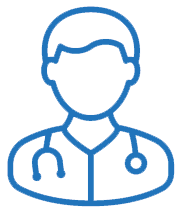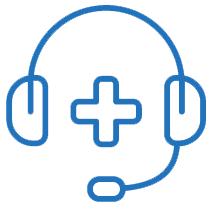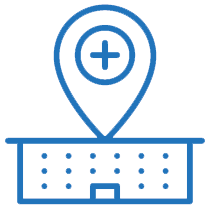Bone Health
Imaging: 309-944-9135
Rehab: 309-944-9150
One of the most common and concerning conditions affecting seniors is osteoporosis. It is a growing crisis for millions of women and men. Studies suggest that as many as one in three women and up to one in five men age 50 and older will experience an osteoporotic fracture. Although this disease is common, many people who have it don’t even realize it until a fracture occurs.
What is Osteoporosis?
Osteoporosis is a disease where your bones become weak, brittle and more likely to break. Those who have osteoporosis are at risk of bone fracture (especially the hip, wrist or spine) from something as insignificant as a minor fall, bumping into furniture, or even a cough or sneeze. The effect on quality of life can be devastating. Fortunately, osteoporosis is detectable and treatable. Testing is safe and non-invasive.
How do you test for Osteoporosis?
Osteoporosis is diagnosed with a simple, yet effective test called a bone density scan, also known as a bone mineral (BMD) test. This test measures a person’s bone density or volume of calcium and minerals within bone tissue. Bone density scans can help to:
- Detect osteoporosis before a fracture occurs
- Predict your chance of fracture in the future
- Determine your rate of bone loss or monitor the effects of treatment
Should I have a bone density scan?
Based on your risk for developing osteoporosis, your doctor can help you determine if you should have a bone density scan. Bone density scans, however, are recommended if you are age 65 or older regardless of risk.
But, if you are under 65 years of age, you should have a bone density scan if you have one or more of the following risk factors:
- Calcium-deficient diet
- History of amenorrhea, the abnormal absence of menstruation
- History of malabsorption
- Moderate to high alcohol intake
- Poor nutrition
- Postmenopausal
- Prolonged treatment with steroids certain anti-cancer drugs, thyroid hormone, and some anti-seizure medications
- Sedentary lifestyle
- Significate caffeine consumption
- Small-boned frame
- Smoking habit
What can I expect during a bone density scan?
A bone density scan is a simple, non-invasive and painless exam, designed to measure bone mass in areas such as your spine, hip, wrist, finger, kneecap, shinbone, and heel. The test uses a low dose X-ray to detect signs of bone thinning and mineral loss. The standard scan measures the density of the spine and hip, but sometimes the forearm is measured if the patient has hyperthyroidism or if either hip cannot be scanned.
A bone density scan takes about 15 minutes, including on-site registration. During the procedure, you will lie on a table scanner (fully clothed) for five to eight minutes. A technologist will sit next to you throughout the procedure.
How do I prepare for a bone density scan?
A bone density scan requires little preparation. You may eat normally and take medications as prescribed by your doctor the morning of your test. However, do not take any vitamin pills or mineral supplements (including calcium) two days prior to your exam. In addition, you must not have had any exams involving barium or radioisotopes within the last month. These scans interfere with the bone density results. If you are not pre-registered, please arrive at Admitting 15 minutes prior to your scheduled exam. You will then go to the Imaging Department to check-in. If you have any other questions regarding your test, please call the Imaging Department at 944-9135.
What can I do to prevent Osteoporosis?
- Get enough calcium and vitamin D and eat a well-balanced diet
- Engage in regular exercise
- Eat foods that are good for bone health, such as fruits and vegetables
- Avoid smoking and limit alcohol to 2-3 drinks per day




